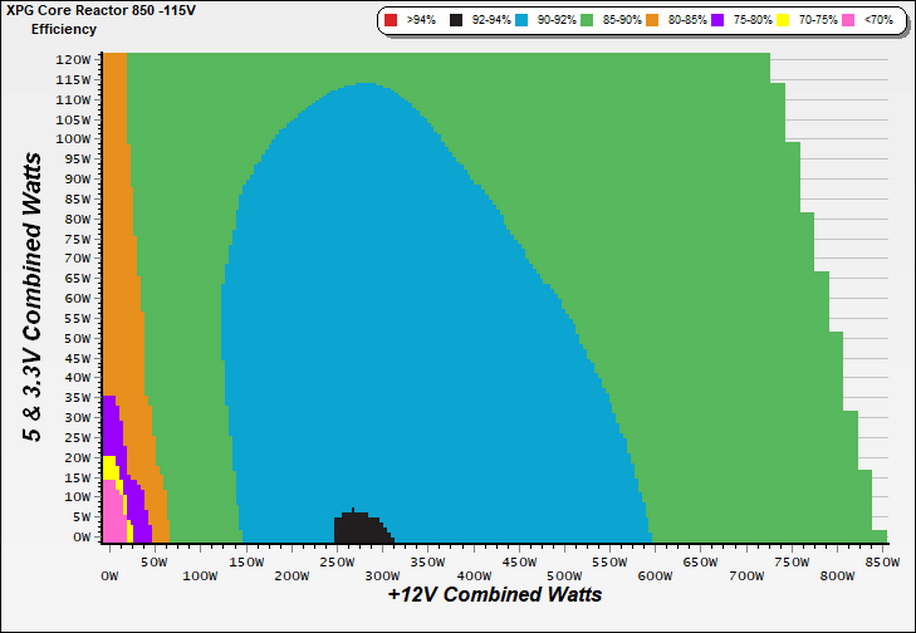Why you can trust Tom's Hardware
Protection Features
Check out our PSUs 101 article to learn more about PSU protection features.
Protection Features | |
OCP | 12V: 84.4A (119.21%), 12.103V |
OPP | 1034.93W (121.76%) |
OTP | ✓ (132°C @ 12V heat sink) |
SCP | 12V: ✓ |
PWR_OK | Proper Operation |
NLO | ✓ |
SIP | Surge: MOV Inrush: NTC Thermistor & Bypass Relay |
The OCP triggering point at +12V is configured correctly, but this is not the case with the minor rails which have unnecessary high OCP triggering levels.
The OPP is appropriately set, while OTP is set a little lower than the usual for CWT platforms, but this is probably the case because this unit doesn't feature a semi-passive operation, so its internal temps don't go high.
DC Power Sequencing
According to Intel’s most recent Power Supply Design Guide (revision 1.4), the +12V and 5V outputs must be equal to or greater than the 3.3V rail at all times. Unfortunately, Intel doesn't mention why it is so important to always keep the 3.3V rail's voltage lower than the levels of the other two outputs.
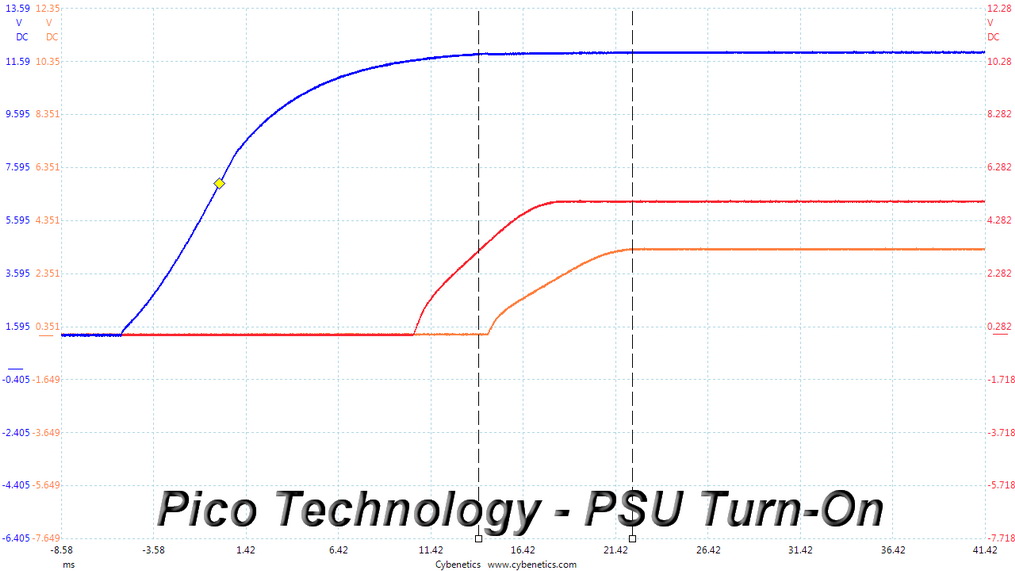
DC Power Sequencing Scope Shots
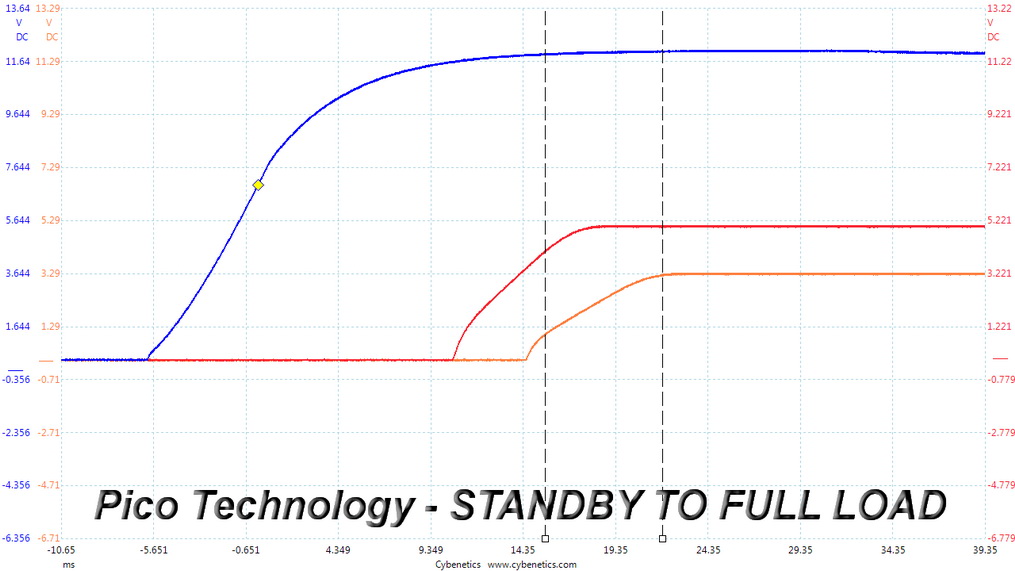
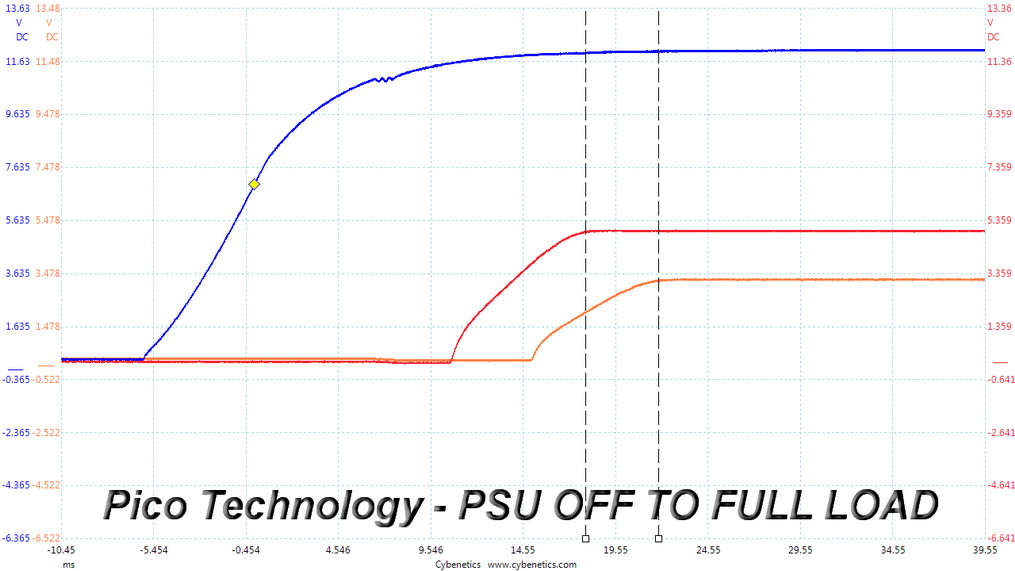
The 3.3V rail is always lower than the other two, so it meets the ATX spec's requirements.
Cross Load Tests
To generate the following charts, we set our loaders to auto mode through custom-made software before trying more than 25,000 possible load combinations with the +12V, 5V, and 3.3V rails. The deviations in each of the charts below are calculated by taking the nominal values of the rails (12V, 5V, and 3.3V) as point zero. The ambient temperature during testing was between 30 to 32 degrees Celsius (86 to 89.6 degrees Fahrenheit).
Load Regulation Charts
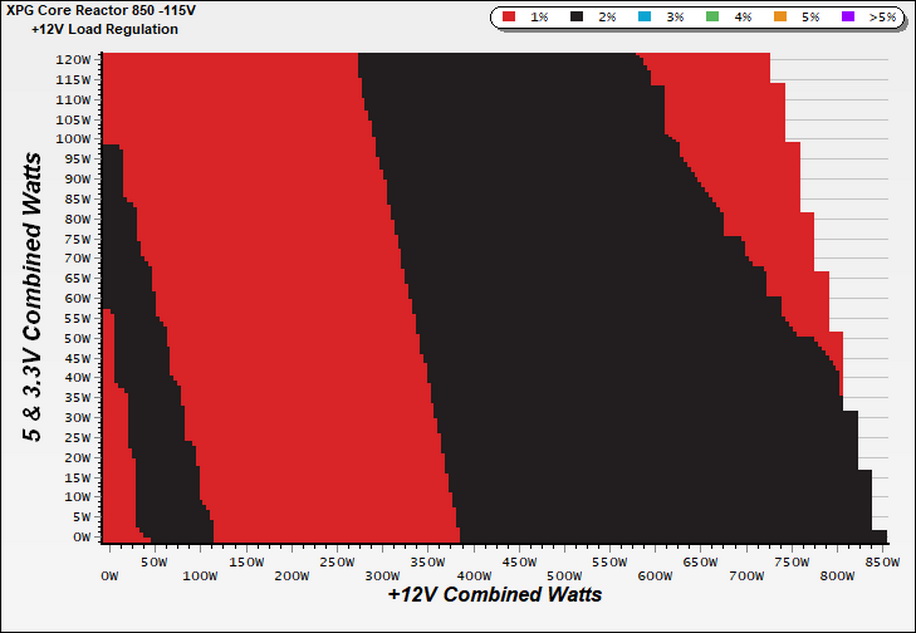
Load Regulation Charts
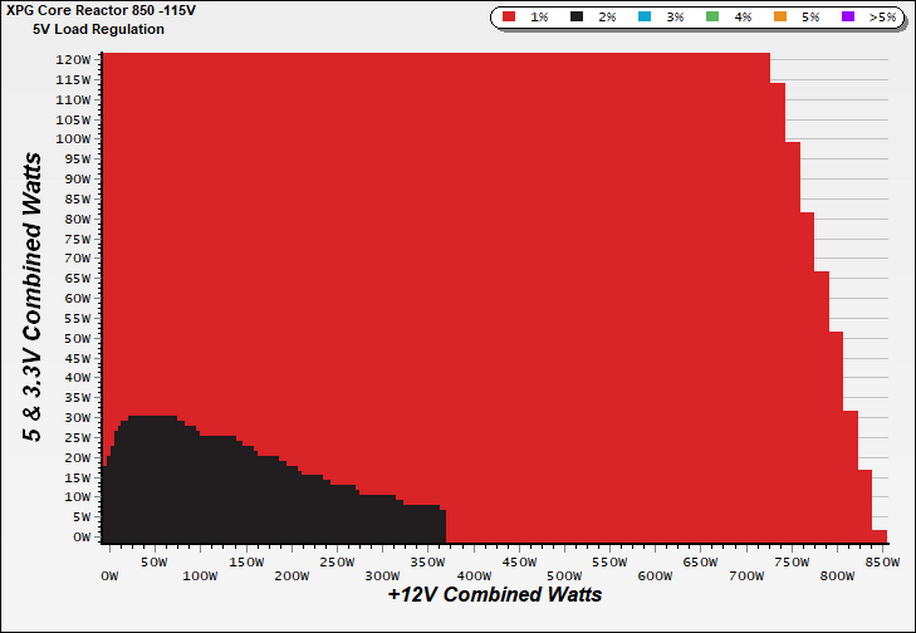

Efficiency Chart
Ripple Charts
The lower the power supply's ripple, the more stable the system will be and less stress will also be applied to its components.
Get Tom's Hardware's best news and in-depth reviews, straight to your inbox.
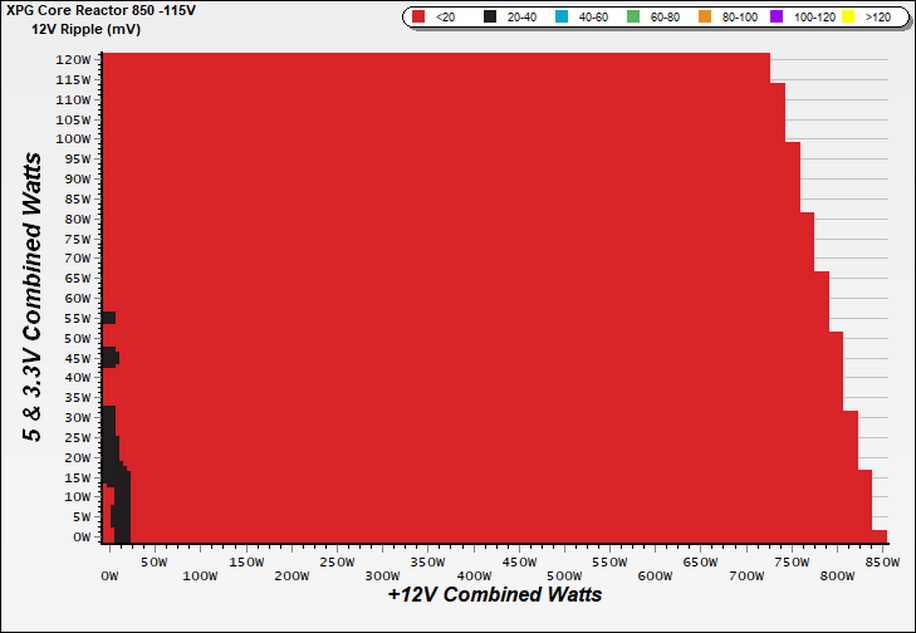
Ripple Suppression Charts
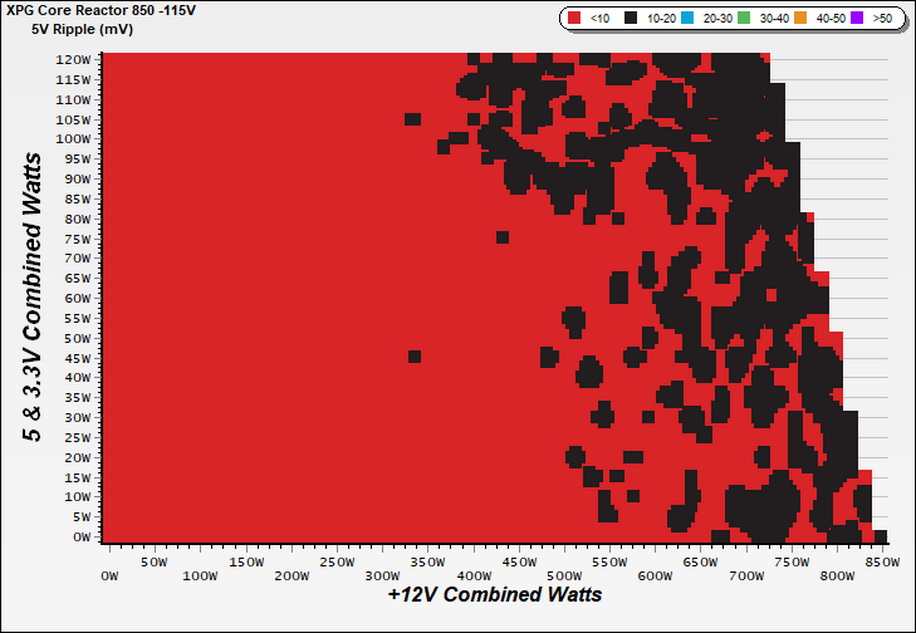
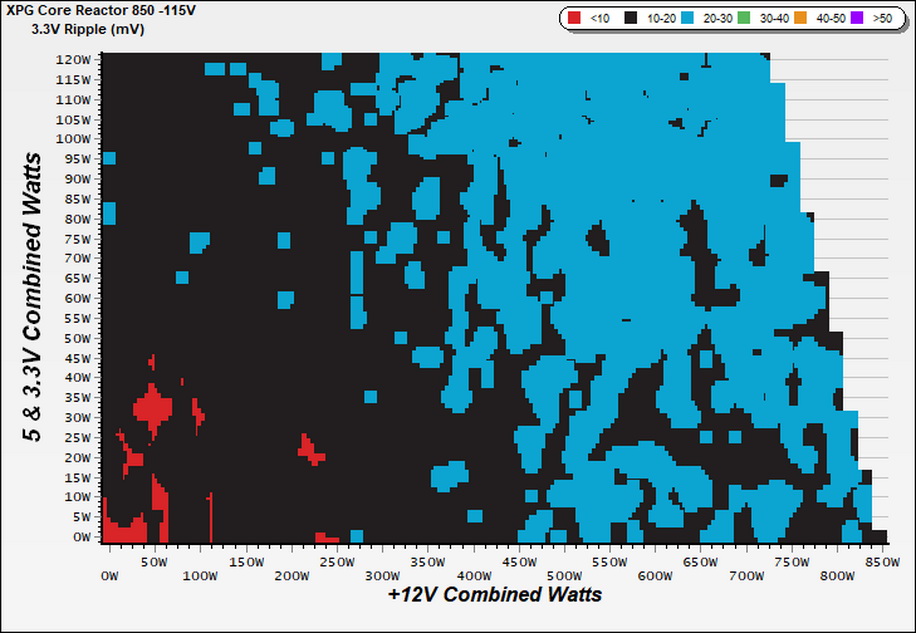
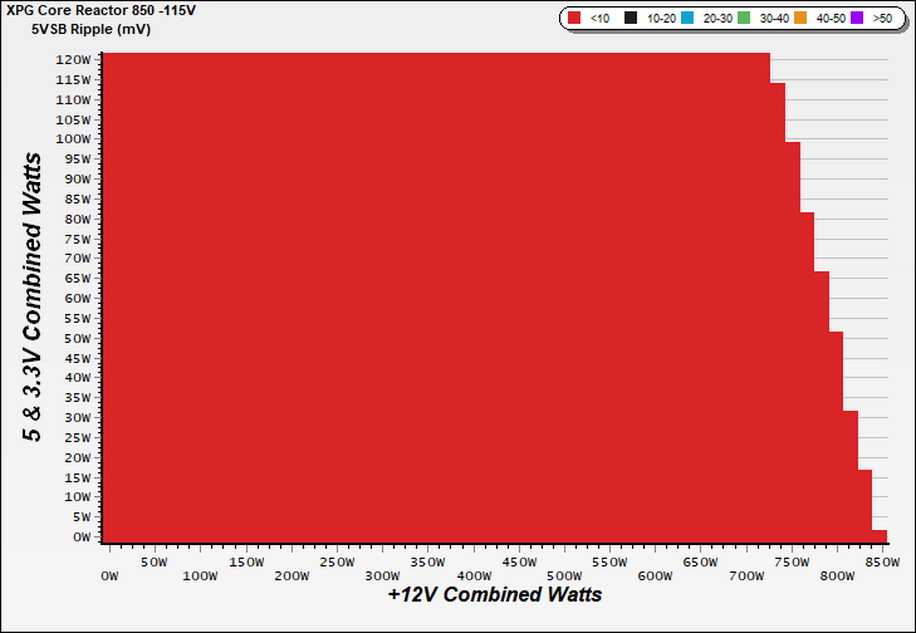
Infrared Images
We apply a half-load for 10 minutes with the PSU's top cover and cooling fan removed before taking photos with a modified FLIR E4 camera able to deliver an IR resolution of 320x240 (76,800 pixels).
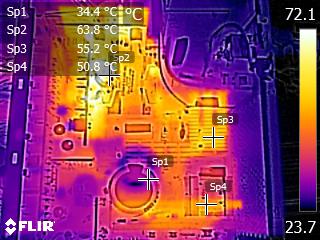
IR Images

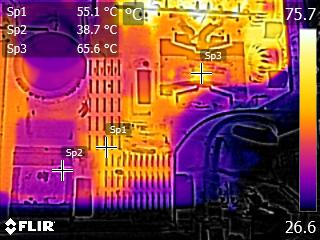

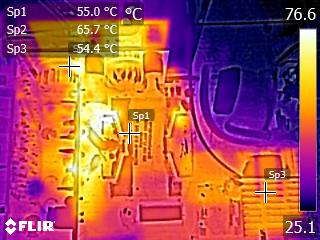


The temperatures are increased at the +12V board, but not at alarmingly high levels. CWT could loosen up the fan speed profile, without jeopardizing the PSU's reliability through time.
MORE: Best Power Supplies
MORE: How We Test Power Supplies
MORE: All Power Supply Content
Current page: Protection Features, DC Power Sequencing, Cross-Load Tests and Infrared Images
Prev Page Load Regulation, Hold-Up Time, Inrush Current, Efficiency and Noise Next Page Transient Response Tests, Timing Tests, Ripple Measurements and EMC Pre-Compliance Testing
Aris Mpitziopoulos is a contributing editor at Tom's Hardware, covering PSUs.
-
Olle P Hardware-wise this seems like a great PSU.Reply
One good thing that wasn't listed is that the housing actually adhere to the ATX-format! (Most PSUs have the wrong length.) -
Darkbreeze There are no standards for depth on ATX power supplies. They vary from model to model and it has been that way since forever. Even within the same brand. This is nothing new. There is no ATX format regarding depth for it to adhere TO.Reply
Aris. Any idea yet whether all three capacities of this power supply are using the same platform and have the same expected or similar performance and characteristics or no idea at this time? Thanks. -
Yeca I got one of this recently for a new build, and being the paranoic person that i am, i bought a psu tester and it showed a 80ms PG result. The 12V, 5V and 3.3V results were alright. Is this something i should worry about?Reply -
Yeca Reply
Got it, thanks!Darkbreeze said:You should start your own thread. This is not the place for such questions.
